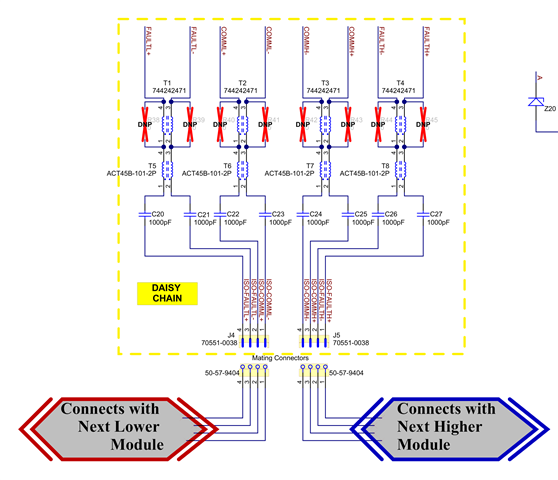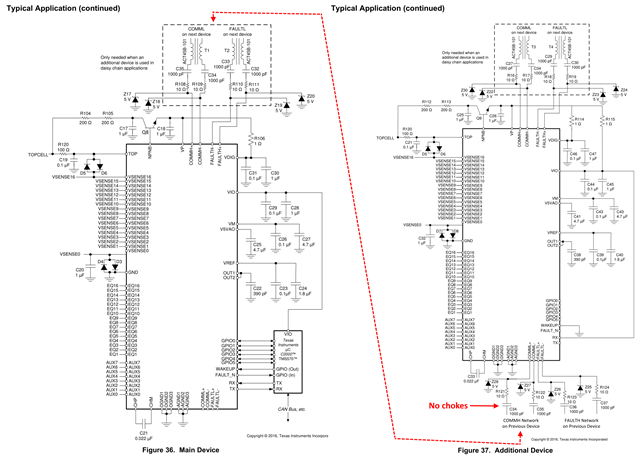Hello there,
I am designing a device around the BQ76PL455A-Q1 based on the TIDA-00717 EVM board. In the communication path I have noticed some common mode chokes (T5, T6, T7 and T8):

These are quite expensive parts and I am looking for the options to reduce their usage. For instance, in the IC's datasheet we can read:

So the 1st question is: Do we really need to use the FAULTL/ FAULTH as differential pair? Since the hearbit is only 10 kHz and it does not really provide any data other than "toggling or not toggling", then maybe a simple opto isolater line would do?
In the DS we can see the following exemplary designs:

It can be noticed that the chokes are only present on the COMML/ FAULTL lines, but not on the COMMH/ FAULTH lines. This is different from the EVM, in which chokes are redundant.
Question 2 is: is it safe to omit the chokes on 1 of the sides as presented in the DS?
I would appreciate all feedback.


